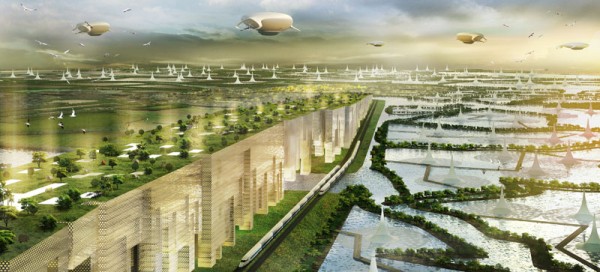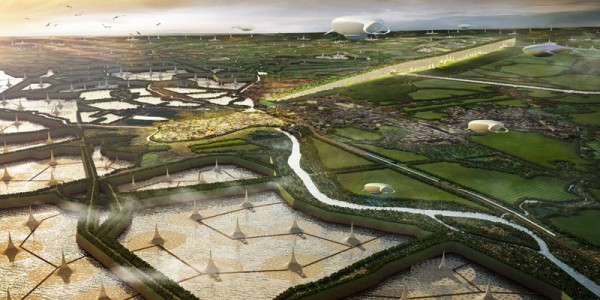The city of Ayutthaya, Thailand, was founded when King U Thong ran there to escape a smallpox outbreak in Lop Buri way back in 1350 and proclaimed it the capital of his kingdom. Located on an island in the Chao Praya river, the city’s easy access to water played a part in its economic success, offering farmers access to freshwater for rice crops, as well as a convenient way to bring those crops to market. But that same water — once the lifeblood of the city — has now become a source of catastrophic flooding. Last year, the river’s annual flooding surged beyond historical records and overcame the city’s protective embankments, causing massive damage to this UNESCO World Heritage site and leaving 200,000 people unemployed.
With global climate change and rising sea levels all around, the city’s outlook for the future, sans some serious intervention, clearly is not all that cheery.

Shma Designs has developed a vision for how Ayutthaya can save itself by moving into a new balance with the Chao Praya river, and become more sustainable in the process. This vision, known as the Water City of the Future (which comes to us via eVolo) consists of five modules: Agriculture + Water Infrastructure; Agriculture + Food; Agriculture + Energy & Waste Exchange; Agriculture + Industry; and Agriculture + Tourism.
The firm’s design calls for turning agricultural areas into large water detention reservoirs capable of storing large amounts of water during the annual flood season for use during the dry season. This would be achieved via bioswales that direct the water into these reservoirs, which would be equipped with drain channels to filtrate overflow water biologically before releasing it to the river. A key part of making this system work is adjusting local farming practices. Currently, farmers in the region practice what is known as the In-Season Rice Field method, which overlaps with the annual flood. Switching to the Double-Cropped Field method would leave these lands open to function as a protective barrier around the city.

Shma likewise envisions a more sustainable connection between agriculture, urban infrastructure and energy in the area. Agricultural wastes would be converted, via gasification, into electricity for the city, while the city’s food scraps and yard debris would be picked up curbside and composted into fertilizer for the rice fields.
The plan also calls for high speed rail, which would create an economic corridor connecting Dwai (Myanmar) to Kanchanaburi (Thailand) and Bangkok to Ho Chi Min City (Vietnam). This would turn Ayutthaya into a logistic hub for the region, attracting an influx of goods, labor and investment, while giving the city a convenient way to turn its increased agricultural productivity into cash, by shipping its rice farther afield.
That same high speed rail system was envisioned as a way to bring tourists to the city as well, who would be attracted not only to the architectural remnants of ancient Ayutthaya, as they have been for years, but to this gee-whiz Water City of the Future. Shma even sees the potential for water-based activities and attractions during the flood season, with visitors lodging on flooded fields in floating tent accommodations. (Anyone up for a little rice-field paddle-boarding in the morning?)